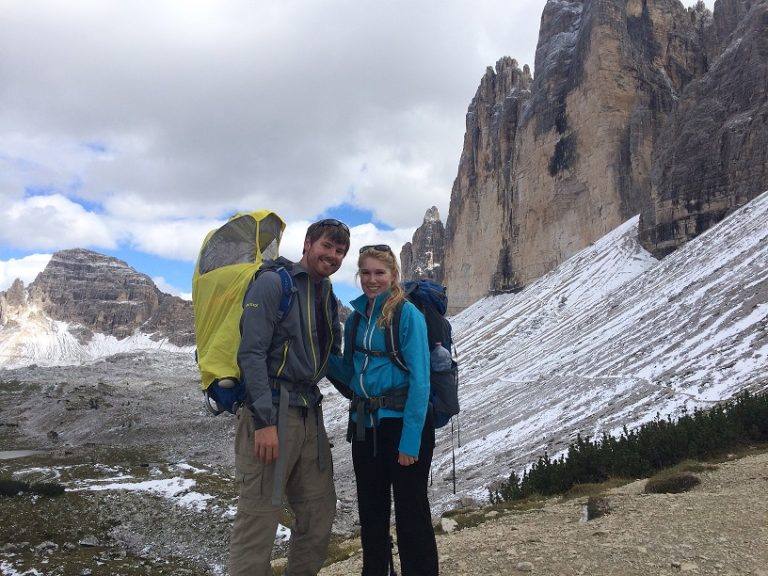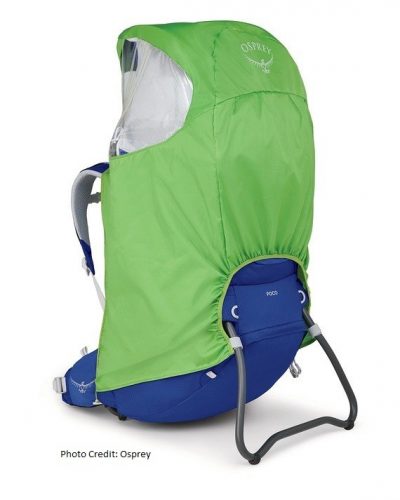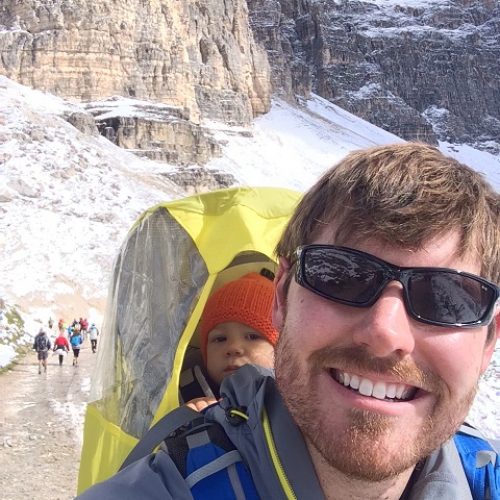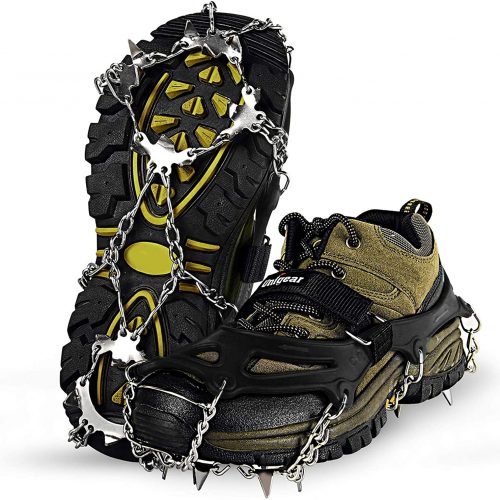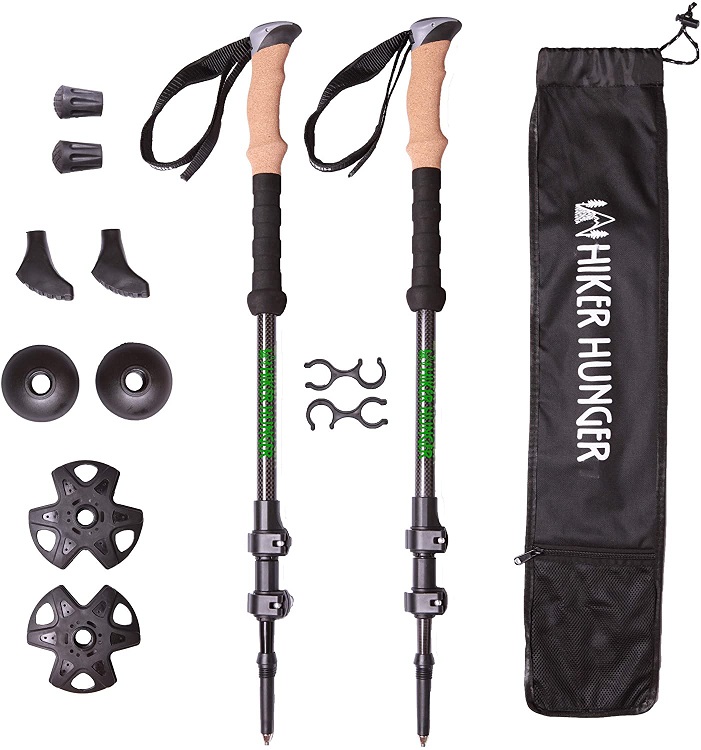How to hike with a baby in winter
Thekidpacker.com may receive a small commission for purchases made through links in this post.
How to Hike with a Baby in Winter
Updated: January 24, 2021
Why Hike in Winter?
Why even attempt to hike with a baby in winter? Hiking in winter is a completely different experience compared to summer hiking. The trails are less crowded, the woods are quiet and the contrast of the snow on the landscape creates an unforgettable experience.
There are a few differences when it comes to planning and packing for a winter hike with a baby that you need to know about and we go into that below in addition to a few must have items!
How to Hike with a Baby in Winter
Step 1: Planning for a Winter Hike with Baby
With any hiking adventure with a baby there are three phases: planning, packing and hiking.
A great tool for planning a winter hike with a baby is AllTrails.com. AllTrails is an amazing tool for planning which trail to take and when. Not only do they have detailed information on pretty much every trail imaginable but, they also include recent reviews and photos from AllTrails users. When we are planning any hike (especially in winter), we check for distance, difficulty, elevation gain, and recent reviews with photos. The recent photos and reviews are the most helpful. They let you see snow conditions, terrain, and provide a good sense of if it is the adventure you are looking for.
When selecting your trail remember that what comes up must come down and carrying a baby on your back can make it harder on your knees on the way down. This is where hiking poles come in handy.
We also recommend downloading maps for where you will be hiking. Trails are often outside of cell coverage areas and a downloaded map can be a life saver. We recommend a free app called maps.me. We have used this app all over the world for hikes, driving directions and walking around town. Make sure to download any maps needed before leaving for your trip. If using internationally, put your phone on airplane mode and allow location services for the app. This will prevent any data being used and enables GPS capabilities. This is an amazing app!
Step 2: Packing for A Winter Hike With Baby
When packing for a hike with a baby in winter there are a few differences to consider compared to summer hiking. If hiking with a partner, consider having them carry a pack to spread out the gear weight. Even if you are not planning to picnic on your hike, bring a substantial snack for yourself and your baby. Hiking in the snow at high elevations can be exhausting and the additional calories will be appreciated. Also, make sure to bring the same amount of water on a winter hike as you would in summer. You can really work up a sweat hiking in the snow and a lot of water is needed.
Another misnomer is that the sun isn’t as strong in winter, this may be true in some places but, when hiking at high elevations with snow glare, your skin can burn extremely quickly. Sunscreen can be used to protect your skin from the sun and wind. Don’t forget sunglasses and SPF Chapstick as well!
Take a look at our list of additional items to pack for hiking with a baby in winter below!
A few additional items we pack for hiking with a baby in winter not listed below include: a packable picnic blanket, diaper clutch, water bottles, snacks, extra layers for adult and baby, SPF 70 + sunscreen, and SPF Chapstick.
Items for Hiking with a Baby in Winter
1. Baby Backpack Carrier
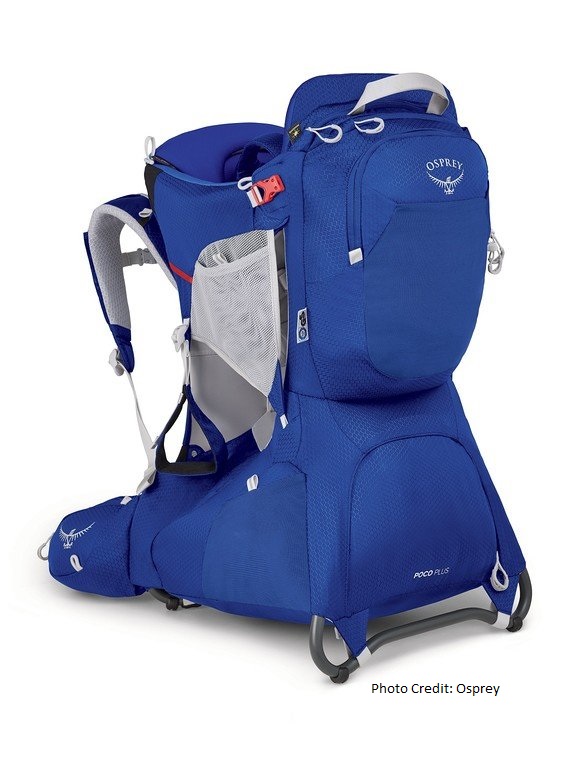
A baby backpack carrier opens new doors for your family especially in regards to outdoor activities. There are many circumstances where a stroller just won’t do and hiking is at the top of that list! If you want to go on a winter hike with your baby, a baby backpack carrier is the way to go!
Why a baby backpack carrier and not a front facing carrier? There are a multitude of answers to this for hiking specifically. Front carriers block the wearer’s view of their feet, they put the baby in direct contact with the wearer (which makes for a sweaty situation), the baby is much more exposed to the elements and gear storage is a bare minimum.
Now that we have determined why a baby backpack carrier, lets discuss which is the best for hiking. There are a lot of baby backpack carriers out there and we have reviewed many of them. The Kid Packer’s best overall baby backpack is the Osprey Poco Plus. The Poco Plus has plenty of gear storage, is exceptionally comfortable for adult and child, and has a weather cover available for winter hiking. It is the best on the market.
If considering a baby backpack carrier, take a look at our Top 5 Baby Backpack Carriers article where we also recommend the Thule Sapling Elite and Osprey Poco for hiking. Baby backpacks come in many different configurations and price points.
For more info, check out The Kid Packer’s in-depth review of the Osprey Poco Plus to learn more about our choice for a baby backpack carrier for hiking with a baby in winter.
2. Baby Backpack Carrier Rain Cover
Baby backpack rain covers are not only for rain! We used our rain cover for cold weather more than rain by far, especially when hiking with a baby in winter. The rain cover provides a wind barrier and keeps warmth in. The Osprey rain cover easily attaches to the baby backpack carrier via velcro loops and clips providing a secure fit with the sunshade up. This rain cover design also includes clear plastic sides so that your baby can enjoy the views and still provides access to the lower storage area when on. A rain cover is a must for hiking with a baby in winter.
3. Baby Bunting/Snowsuit
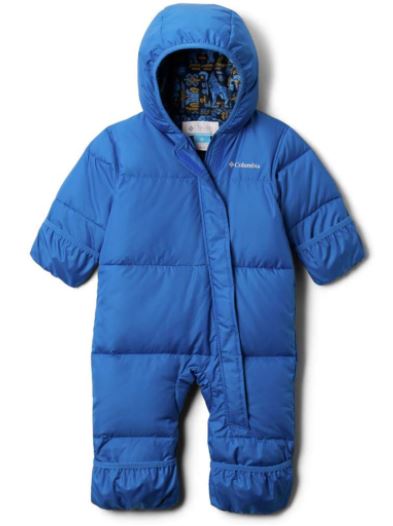
Whether you call it a bunting or snow suit, this item serves the purpose of keeping your baby warm and is an essential when hiking with a baby in winter. We prefer a design that includes a hood and foot/hand covers built in. This provides warmth and prevents lost mitts and booties on the trail. Another added benefit is that the foot covers prevent the snowsuit legs from riding up your baby’s leg leaving it exposed. As your baby grows and starts walking, the foot covers can be folded back so that they can wear shoes.
We like the Columbia Snuggly Bunny Bunting design because it has everything built in with an easy to use zipper. We recommend warm base layers for baby while winter hiking, extra thick socks too!.
For extra insulation, consider wrapping your baby in a packable blanket. Between the child seat and harness, the blanket stays snug in the baby backpack carrier while keeping your baby extra warm. A packable blanket is also handy for wrapping up on stops along the trail. Our go to packable blanket for travel is the Kelty Bestie Blanket but, there are a lot of similar products out there!
When hiking with a baby in winter traction cleats are invaluable. Wearing a baby backpack can change your center of gravity depending on the size of your child, how well the pack is adjusted for your frame and how wiggly your child is being. Having traction cleats on your boots can prevent a small slip from turning into a full on fall with your child on your back. Traction cleats can be worn during an entire hike but, we found that they are most important when hiking back down. Not familiar with traction cleats? No worries. They are simply metal spikes that easily strap on to any boots or shoes.
A few things to keep in mind in regards to using traction cleats while hiking with a baby in snow: 1) They are easier to put on before you put on the baby backpack carrier 2) They are not intended for hiking on rocks and are best on snow/ice 3) Be careful not to snag them on your pant bottoms. 4.) Traction cleats are not snow shoes and are not intended for deep snow. They are instead meant for hiking on packed snow and ice covered trails.
In our opinion, when hiking with a baby in winter, traction cleats are a must!
We found that traction cleats have opened up an entire new type of hiking experience for our family. Where we used to feel unsafe/unsure about trails with snow and ice, we now can access countless new trail opportunities. When your child outgrows the baby backpack carrier, there are traction cleats for kids as well!
Our preferred traction cleats for hiking in winter are offered by Unigear. The Unigear design includes a stiff but stretchy band that goes around your boot and a velcro strap for extra security. There are a lot of brands out there so, see what works best for you!
Hiking poles are an absolute must when hiking with a baby in winter. They help you maintain your balance on slippery terrain with a large pack and can save your knees on the hike down. We recommend hiking poles on most hikes with a baby but, in winter conditions, hiking poles are so much more that stabilizers. Hiking poles can also be used to test the depth of snow on the trail.
We recommend you use whichever trekking pole you prefer for summer hiking but with the addition of snow baskets. Our go to hiking poles are from Hiker Hunger. We prefer their flip lock mechanism for adjustments compared to most on the market. We also like that tips and baskets for all seasons/conditions are included, and the poles are reasonably priced.
If you are looking for poles that are easy for travel (especially flying), take a look at these LEKI Trekking Poles. They collapse super small. We learned the hard way that packing large hiking poles with metal tips will tear a suit case. We recommend using the tip caps provided when packing.
Step 3: Hiking in Winter With Baby
Now that you have done all the work of planning and packing for a winter hike with baby, the hiking part should be easy right? Well, it will be easier with these tips and tricks, but still an exhilarating challenge!
So, you have selected a trail that suits you, packed all the winter essentials and are ready for a winter hike with your baby. If your trail is snow/ice covered we recommend putting on your traction cleats before putting on your baby backpack carrier and beginning the hike (learn more about traction cleats above). Its best not to risk a fall with your baby on your back.
Once you have your traction cleats and fully packed baby backpack carrier on, grab your hiking poles and head out on the trail. We always recommend reading and taking a picture of the trail map at the trailhead as a reference and to ensure you are at the right place. We also recommend making sure that your offline map has you located via gps on the map.
We always suggest pacing yourself when hiking with a baby on your back especially in the snow at high elevation. Typically you can plan for a much faster decent on a hike but, in winter with snowy conditions, that is not always the case. You have to be extra careful with foot placement even with traction devices on your boots. Just keep this in mind as you go so that you can make sure to get back to your car before it gets dark. Also keep in mind that it typically gets dark much earlier in winter. Plan to be done by 4 pm to be safe.
Now that we have all the serious talk out of the way, here is the most important tip for hiking with a baby in winter: enjoy yourself! Winter is such a beautiful season and is best enjoyed outside!
How to Hike with a Baby in Winter - Summary
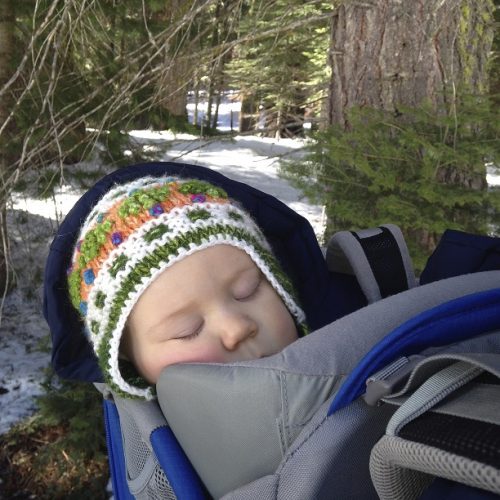
Not only is hiking with a baby in winter possible but, it can be a wonderful and unique experience! Like any outing with a baby, there are things to pack and plans to make but if you follow these tips you should be well on your way to a successful winter hike with your baby!
About The Kid Packer

Here at The Kid Packer, we want to help you live your best life. A great baby backpack child carrier can help you do just that. After having used a child carrier backpack for over 1,500 miles of adventuring and exploring, we have a passion for them and know what makes a great pack that both you and your child will love. We hope our comprehensive research allows you to confidently find the right backpack for your needs!
